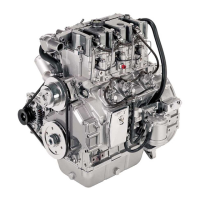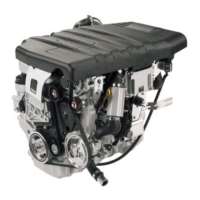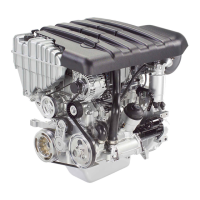R750EU5 - IE3 - TE4 - IE4 - ISE4
English 37 Ed.8 / 10-2012
GB
MAINTENANCE DURING RUNNING-IN (FIRST 50 HOURS)
For each maintenance operation, ll in the “Periodic maintenance operation record
sheet” provided, so as to keep a trace of the operations performed and therefore
establish the most suitable methods for future operations.
Frequency
(1)
Component
Type of inter-
vention
Intervention
procedures
Reference
Every 10
hours (Every
day)
Engine oil (2) Level control
Top up, if nec-
essary
See Engine oil
level control
Coolant (4) Level control
Top up, if nec-
essary
See Engine
coolant level
check
Air lter
Check it is
clean
Clean with low
pressure com-
pressed air.
Check the clog-
ging indicator
that is installed
on the lter body
Clean the lter
or, if necessary,
replace it with a
new one.
See Cleaning
and replacement
of the air lter
Coolant uid
radiator
Check it is
clean
Clean with a
soft brush
After the
rst 50 hours
(at the end of
running-in)
Oil lter (3) Replacement
See Oil lter
cartridge re-
placement
(1) If an hour counter is not available, the
frequency of the interventions should be calcu-
lated on the basis of a calendar day: one calen-
dar day corresponds to 12 hours of operation.
(2) In hard working conditions, such as dusty
environments and operation with extreme
loads, change the oil of the engine and the oil
lter every 150 working hours. If the engine
has not worked for the specied time, it will be
necessary to replace the oil and the lter all the
same once a year.
(3) If the engine has not been in operation for
the length of time indicated, the lter must still
be changed at least once every 12 months.
(4) If the engine has not been in operation for
the length of time indicated, the uid must still
be changed at least once every 24 months.
(5) If the engine has not been in operation for
the length of time indicated, the belt must still
be changed at least once every 24 months
Periodic maintenance operation record
sheet
For each maintenance operation, ll in
the sheet, so as to keep a trace of the
operations performed and therefore
establish the most suitable methods
for future operations.
